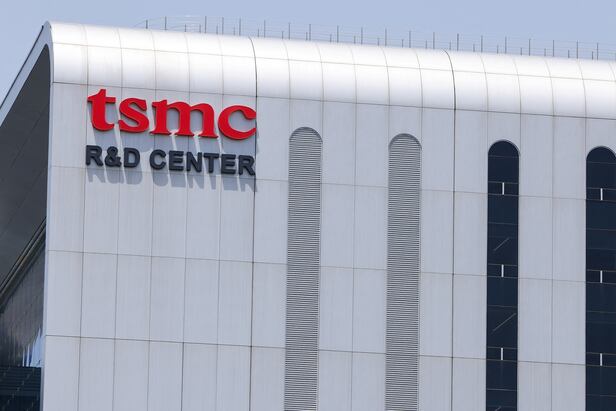
Jensen Huang, CEO of Nvidia and a central figure in the global artificial intelligence revolution, said the company plans to build up to $500 billion worth of AI infrastructure in the United States over the next four years.
His remarks came as President Donald Trump has renewed calls to reduce the U.S. trade deficit and bring manufacturing back home by imposing tariffs on foreign-made products.
Nvidia’s chips depend on a complex supply chain that includes foundries, memory suppliers and packaging firms.
While S. Korean companies like SK hynix—which provides high-bandwidth memory (HBM) to Nvidia—are expected to benefit from the investment, analysts say Taiwan is likely to emerge as the biggest winner, thanks to its well-established AI ecosystem.
Taiwan Semiconductor Manufacturing Co. (TSMC), the world’s leading foundry, has secured a near-monopoly on the production of Nvidia’s AI graphics processing units (GPUs), cementing its position as a dominant player in the global supply chain.
Propelled by booming demand in the AI sector, TSMC’s revenue and operating profit in 2023 jumped 33.9% and 43.5%, respectively, from the previous year. The company has already begun producing Nvidia’s latest AI chip, known as Blackwell, at its facility in Arizona.
However TSMC is just one part of Taiwan’s broader AI landscape. The island has cultivated a full-fledged ecosystem that includes companies such as MediaTek, which designs embedded AI chips, and Quanta Computer, which manufactures AI servers.
Huang recently disclosed that Nvidia is working on a joint project with MediaTek, Taiwan’s top fabless chipmaker. Founded in 1997, MediaTek once supplied low- to mid-range modem chips to Samsung Electronics. Today, the company has risen to become one of Nvidia’s key partners, demonstrating the technical expertise needed to thrive in the AI era.
Taiwan’s rise in the AI world has also been fueled by government support. During a major IT expo held in the country last year, President Tsai Ing-wen credited the country’s scientific community for helping transform Taiwan into a hub of the AI revolution.
The government has played an active role in this transformation. In 2021, it launched the “Taiwan AI Action Plan 1.0,” establishing AI research centers at major universities. Two years later, it introduced “Action Plan 2.0,” which aims to train 600 research professionals and 8,000 applied technology experts annually.
Further strengthening its commitment, the government last year announced a five-year initiative called the “National Talent Competitiveness Leap Program,” which aims to cultivate 200,000 AI professionals by 2028.
Although China has made significant advances in artificial intelligence, the United States still holds a commanding lead.
Last year, private-sector investment in AI in the U.S. was more than 10 times greater than that of China. With the U.S. market becoming the key arena for AI competition, S. Korea is struggling to keep pace across the board—from nurturing top talent to fostering innovative startups.
Making matters worse, the country’s already limited pool of AI professionals is increasingly heading overseas. A report from Stanford University showed that South Korea’s AI brain drain is accelerating, with many experts choosing to work for major U.S. tech firms. If current trends continue, experts warn that S. Korea risks falling behind in the rapidly evolving AI era.


